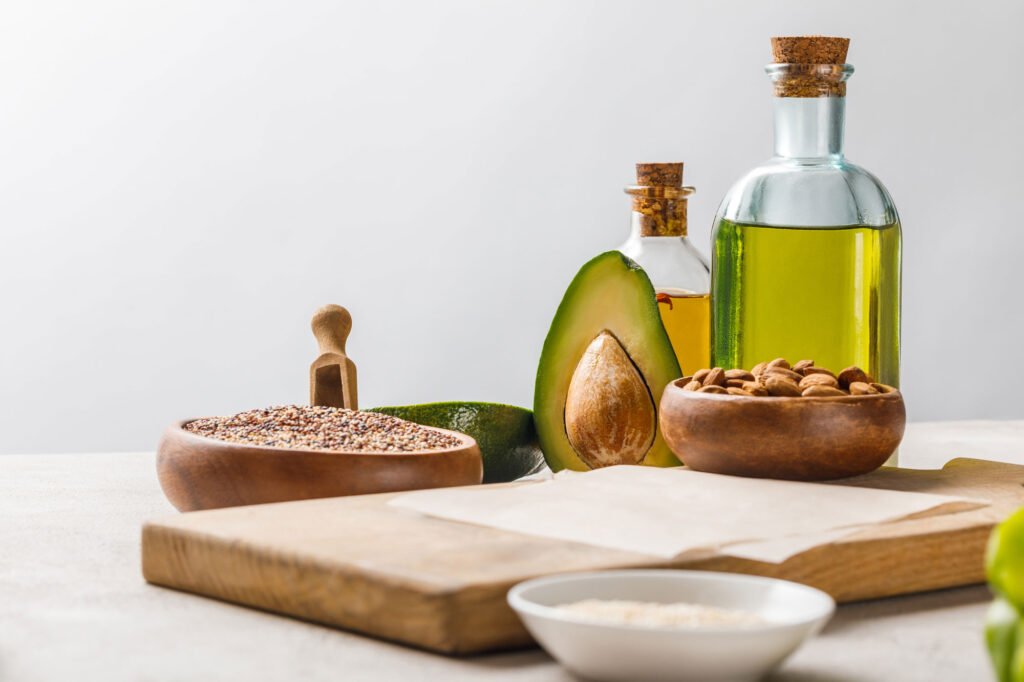Ingredients, Natural, Skin Care
The Power of Essential Fatty Acids in Skincare
Ever notice how your skin seems to change when your diet does? That’s because your skin’s health is closely tied to the nutrients you feed it—both inside and out. Essential fatty acids (EFAs) are quickly becoming a standout ingredient in skincare products. These unsung heroes can transform how your skin looks and feels, and they’re becoming a staple in high-quality skincare formulations.
What Are Essential Fatty Acids?
Essential fatty acids are types of fats that your body needs but can’t produce on its own. They must come from your diet or be applied topically through skincare. EFAs are divided into two main groups: omega-3 fatty acids and omega-6 fatty acids. These lipids are critical for maintaining your skin’s protective barrier, keeping moisture in and irritants out.
When applied topically, EFAs integrate into your skin’s lipid matrix, helping to repair damage, improve hydration, and reduce inflammation. In short, they’re like building blocks that keep your skin functioning at its best. Studies have shown that omega-3 and omega-6 fatty acids can significantly improve skin elasticity and hydration while reducing symptoms of conditions like eczema and acne.
Which EFAs Are Commonly Used in Skincare?
Not all EFAs are created equal when it comes to skincare. Let’s look at the ones you’re most likely to encounter:
Omega-3 Fatty Acids
Omega-3 Fatty Acids are anti-inflammatory powerhouses. They’re often sourced from ingredients like flaxseed oil, chia seed oil, and algae extract. They’re known for soothing irritated skin, reducing redness, and promoting a plumper, more hydrated appearance. Products rich in omega-3 fatty acids are particularly beneficial for those with sensitive or rosacea-prone skin.
Omega-6 Fatty Acids
This group includes linoleic acid, which is a game-changer for oily and acne-prone skin. Linoleic acid helps regulate sebum production and prevents clogged pores, reducing the likelihood of breakouts. Oils like evening primrose oil, hemp seed oil, and safflower oil are common sources.
Gamma-Linolenic Acid (GLA)
A specialized type of omega-6 fatty acid, GLA is found in borage oil and evening primrose oil. It’s particularly effective at calming inflammation and restoring moisture to dry or damaged skin. If you’ve ever used a rich moisturizer that left your skin feeling instantly soothed, there’s a good chance it contained GLA.
Alpha-Linolenic Acid (ALA)
This omega-3 fatty acid is abundant in flaxseed and chia seed oils. ALA not only hydrates but also delivers antioxidant benefits, protecting the skin from environmental stressors like pollution and UV damage.

Which Skin Types Benefit Most?
The beauty of essential fatty acids is that they’re versatile. However, some skin types stand to benefit more than others.
Dry or Dehydrated Skin
If your skin feels tight, flaky, or lacks that dewy glow, EFAs are your best friend. They replenish the skin’s natural lipid barrier, locking in moisture and restoring softness. Omega-3-rich oils like algae and chia seed oil are especially effective for deeply hydrating dry skin.
Sensitive Skin
Redness, irritation, and a burning sensation are hallmarks of sensitive skin. EFAs, particularly omega-3 fatty acids, work to calm these symptoms. They reduce inflammation and strengthen the skin’s barrier, making it less reactive to external irritants.
Oily or Acne-Prone Skin
It might seem counterintuitive to use fatty acids on oily skin, but certain EFAs like linoleic acid can actually balance sebum production. Studies show that people with acne often have lower levels of linoleic acid in their skin, which can lead to clogged pores. Incorporating products with this fatty acid can help regulate oil production and clear up your complexion.
Aging Skin
As we age, our skin naturally produces fewer lipids, leading to dryness, fine lines, and loss of elasticity. EFAs provide the nourishment aging skin craves. They plump up the skin, smooth out wrinkles, and improve overall texture, giving it a more youthful appearance.
How to Incorporate EFAs into Your Skincare Routine
Adding EFAs to your routine doesn’t have to be complicated. Look for products like serums, moisturizers, and facial oils that highlight ingredients such as flaxseed oil, evening primrose oil, or borage oil. Apply these after cleansing but before heavier creams to maximize absorption.
You can also pair EFAs with other beneficial ingredients like ceramides and hyaluronic acid for a powerhouse combination that locks in hydration and repairs your skin’s barrier. Just remember, consistency is key. The more regularly you use these products, the better your results will be.
Essential fatty acids are more than just trendy buzzwords in skincare—they’re essential for healthy, glowing skin. Whether you’re battling dryness, calming irritation, or trying to balance oily skin, there’s an EFA-rich product out there for you. By making EFAs a regular part of your routine, you’ll not only see but feel the difference in your skin’s health.










